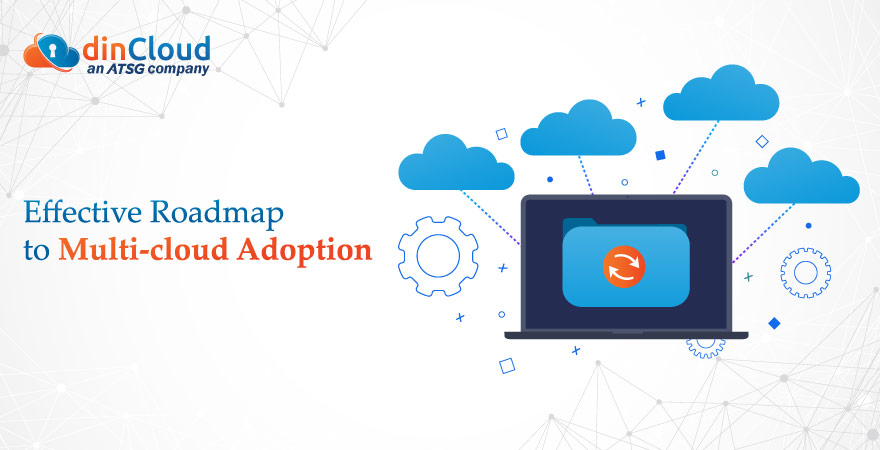The Cloud has proven to be a game changer in modern IT world. It has become a key element in business expansion and efficiency. Those who have adopted cloud-native technology and are now familiar with its benefits, are moving towards the multi-cloud.
Multi-cloud encompasses getting cloud services from more than one Cloud Service Provider (CSP). The reason why organizations opt for this is because it saves cost and optimizes enterprise performance. The effective management of multi-could is important. It entails cloud security management, following compliance policies, consistent application deployments, constant response configuration and visualizing events from logging.

The future of cloud computing is bright, with ample room for even more improvement. Boston based technology consultation group, named Enterprise Strategy Group (ESG), has formulated in-depth research about validation of popular technologies in today’s business environment.
Related: Why Will Multi Cloud be the Future of Cloud?
According to ESG, validation means checking if a specific product or service delivers value to its users, as promised via advertisement. Validation is not confined to the technical aspects and working of hardware and software, but in essence, it shows if value has been generated, since this accelerated business value, across the organization, will keep bringing in new customers and retain the existing ones.
Cloud-native migration has proven to deliver agility, flexibility, scalability and speed. This encourages businesses to embrace cloud-based technologies. According to ESG, 9 out of 10 organizations had already undergone digital transformation, as it is accelerating towards maturity.
Related: Hybrid and Multi Cloud Environments – The Pros and Cons
80% of the reported businesses were planning on undertaking virtual migration in the next five years. Organizations, applications and workloads fit perfectly well with cloud-based infrastructures. Even though it seems like cloud adoption adds an extra expense head to businesses, but optimization and efficient planning can reduce cloud-based expenses and the overheads associated with on-premise IT infrastructures.
In order for enterprises to successfully implement multi-cloud migration, following steps must be considered by key visionaries and change agents within organizations.
- Create multi-cloud awareness across the organization.
- Come up with a forward-looking digital transformation strategy.
- Set milestones for successful multi-cloud implementation.
- Test and evaluate your approach.
- Ensure proper training is provided for the requisite skills.
- Fully embrace the new approach with an open mindset.
Related: Why Multi Cloud Computing Is Better Than Hybrid Cloud Computing?
Virtualization’s Financial Benefits
The 2021 ERS study analyzed the performance of Cloud Service Providers, offering automation, DaaS and virtualization. It was found that Hyperconverged infrastructures (HCI) provided fast networking, storage and computing environment as compared to traditional, on-premise infrastructures.
In this study, ESG found out that Cloud Service Providers (CSP) cut down the weekly hours per deployed person from 38 hours to just 1 hour. There is a drastic decrease in painstaking manual process time via Automation, which has further helped increase the overall efficiency of companies.
Hardware is being leased by the minute, resulting in consequent reduction in time. This will be able to help enterprises economize cloud infrastructure management.
Some companies reported that after undergoing digital transformation, they witnessed 97% quicker deployment time in the Cloud. This can significantly decrease the cost for IT resource orchestration.
ESG-Determined Technical Validation Process
Some standards of evaluation must be considered before appraising software technologies. ESG has identified the following hallmarks for sophisticated appraisal of organizations.
1. Database Appraisal
Input/output per second and transactions per-minute are some of the measuring data points, necessary for successful assessment of databases. The yearly updated databases are also compared with the old ones, to see if promised features are added to the update. Data lakes and Splunk SmartStore are some big analytics technologies, used by ESG, to run on Cloud Service Provider’s software for appraisal.
2. End-user Experience
Desktop Virtualization has proven to be a useful technology for organizations, particularly after the pandemic. ESG evaluates VDIs on the basis of VDI environment’s linear scalability and log-on storm of virtual desktops. These evaluations are done on both small and large clusters, makings sure there are no lags in performance with the expansion of scale. Log-on storm of thousands of virtual desktops, shows us if Cloud Service Provider’s Virtual Desktop Infrastructure is running smoothly, once accessed by thousands of users, all at the same time. The virtual desktop solution of Cloud Service Provider, dinCloud (an ATSG company), has stood the test of time, providing agile, flexible, secure and scalable services to users.
Related: Why Hybrid and Multi Cloud Deployments are Inevitable?
Conclusion
After the pandemic, major changes have been witnessed in the way businesses conduct themselves. Business owners are now more inclined towards adoption of Cloud based infrastructures and having contingencies to avoid single point of failure. Deploying multi-cloud techniques can help keep applications up and running, even when one Cloud is overwhelmed with high user demand. Multi-cloud computing has repeatedly proven to be extremely fruitful for the success and productivity of organizations.
dinCloud, an ATSG company, has continuously delivered cloud-based solutions to its valued enterprise customers, tailored to their needs, which can help businesses become successful and undergo secure migrations and modernizations.


